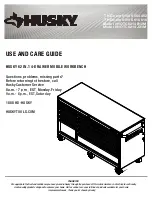
APCQ CAPACITOR BANKS
STATUS
Approved
SECURITY LEVEL
Public
DOCUMENT ID
9AKK107680A4136
REV.
E
LANG.
en
PAGE
38/47
© 2022 Hitachi Energy. All rights reserved.
8. Troubleshooting
Most of the APCQ capacitor bank operating issues may be identified with the help of error messages or icons display
on the RVC/RVT controller. Refer to the troubleshooting paragraph of the RVC/RVT controller instruction manual.
APCQ
capacitor bank
troubleshooting
:
At first, in case of problem, strictly respect the safety instructions.
At first check if the capacitor bank rating is in line with network nominal voltage. If not, you cannot connect the capaci-
tor bank.
Step 1: is the RVC/T working or not?
If working, please check the error message and refer to RVC/T manual to understand the problem.
Call HITACHI ENERGY if you cannot fix the problem by yourself.
If not working: open the capacitor bank and make a visual inspection:
– Is the capacitor bank clean and fan working properly? (if not clean and/or replace the fan),
Note
: Fans must be replaced after about 40000 hours (check working hours on RVC/RVT).
– Are cables properly connected and yellow marks on terminal OK (if not re-screw them.
Note
: at minimum, a yearly maintenance (more frequent if polluted environment).
Note
: the capacitors must be checked yearly - replace them if it is below 90% of initial capacitance (phase current).
Step 2: RVC/T is not working:
– Do we have 230V power supply at L2/L3 (RVC) or PS1/PS2 (RVT) terminals?
•
Check if terminal are properly connected and reconnect them if not the case
– If properly connected, check if 230V is available (disconnect the cables and measure the voltage, after reconnect
them)
•
If 230V is present, then RVC/T is faulty, replace it and check if problem if fixed,
•
If no 230V present, and if the thermal switch is open => Then, there is an over-temperature issue:
–
Check if fan(s) are OK, replace them if not working,
–
Check if the bank is clean and clean it if necessary,
–
Check if the air inlet & outlet are clean, clean them if necessary,
–
Check if the room is properly ventilated (max temp < 40°C and average temp over 24h < 35°C).
•
If no 230V and thermal switch is OK but there is no power supply:
–
Check the auxiliary transformer, if damaged replace it,
–
Are the auxiliary fuses OK or not. If not replace the fuses,
–
Is the auxiliary tap of the transformer properly set - if not change it to network real value.










































